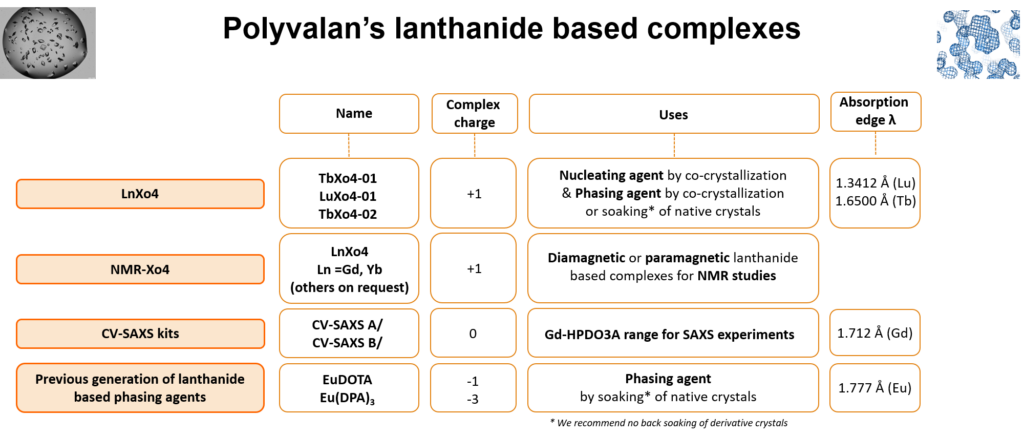Application notes / User guides
FAQ
What is the usual final concentration of Xo4 in the protein solution ?
Xo4 should be dissolved by mixing it with protein solution to reach a final concentration of 10 mM. Then the crystallization experiments should be set up by mixing a volume of this « protein + Xo4 solution » with an equal volume of precipitant solution.
What is the range of final concentrations of Xo4 in the sample ?
The proposed 10 mg/ml concentration is the optimal one. When hit is obtained, it’s possible to conduct an optimization by playing with the protein solution volume used in order to vary the Xo4 concentration from 1 to 10 mM.
Are there any problems using additives such as phosphate, EDTA or EGTA ?
There should be some competition with EDTA or EGTA to chelate the Lanthanide but we don’t know what will be the cinetic for a potential Lanthanide decorporation that could affect Xo4 efficiency. If EDTA or EGTA concentration is low (< 2 mM), this could only affect up to 20% of Xo4 complexes : the unaffected 8 mM Ln-Xo4 are then still falling inside its efficiency range.
Is there any limitation on pH or buffer composition or possible ligands in co crystallization ?
Xo4 has been designed in order to be stable and highly soluble in aqueous medium and consequently fully compatible with high throughput screening. It is stable in all crystallisation conditions that have been tested ; please note that in some cases the presence of phosphate can be detrimental to the efficiency of Xo4.
When mixing the protein with Xo4, the solution may turn milky without affecting the subsequent screening. Check it for nano/micro crystals
What are the preferred binding sites or amino acids for Tb-Xo4 ?
There is direct interaction between protein negatively charged residues but not only.
Are some groups of enzymes inhibited by Xo4 ?
It has never been observed but we cannot exclude it for very specific proteins.

